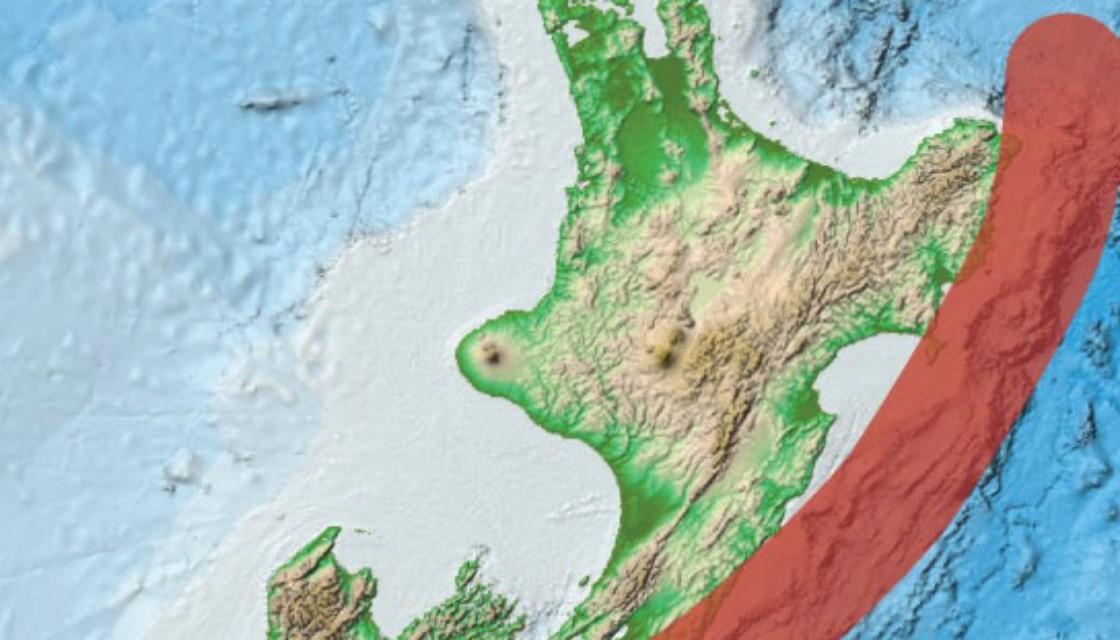【澳纽网编译】专家说,一场 9 级地震可能会对新西兰东海岸造成严重破坏。
研究该地区的研究人员表示,未来 50 年内新西兰最大的断层线有四分之一的机会发生“特大地震”。
新西兰过去最强烈的地震之一是 2016 年凯库拉地震,震级为里氏 7.8 级。与此同时,臭名昭著( infamous)的 2011 年基督城地震的震级为 6.3。
GNS Science 的凯特克拉克博士说,科学的进步已经允许预测主要的俯冲带地震——这可能会发生 8 级和 9 级地震事件。
“我们在马尔堡的格拉斯米尔湖进行了一项研究,在该地点我们发现了两次非常大的海啸的证据。一个大约有 1500 年的历史,一个大约有 2000 年的历史,”她说。
“这是我们第一次能够计算出俯冲带大地震的频率。”
克拉克博士说,板块边界南部发生大地震的可能性很高。
“我们在五年内取得的重大进展之一是对下一次大俯冲地震可能发生的时间有了更好的预测。所以对于我们大多数人——当然是我们的孩子来说,这种情况发生的可能性有四分之一在他们的有生之年。”
Hikurangi 俯冲带 (HSZ) 从北岛东北部延伸,经过霍克湾,位于澳大利亚板块下方。
Gisborne 的民防和应急经理 Ben Greene 警告说,Tairawhiti 地区的居民需要为这样的灾难做好准备。
“作为一个地区,我们是孤立的。Hikurangi 将呈现的事件类型 – 它将是多地区的。因此,本质上的支持不会是 12 小时内出现的直升机。我们需要在一段时间内保持弹性。”
德克萨斯大学的地球物理学家劳拉·华莱士博士说,近海地震对新西兰人构成了最大的威胁。
她说,海床上的足够运动可能引发巨大的海啸,“这确实是对潜在生命损失的最大担忧”。
“沿着 Hikurangi 俯冲断层线的地区是新西兰最大的地震和海啸源之一。由于 GeoNet,我们能够监测俯冲带上发生的事情 – 它的一部分在我们脚下,但我们确实是对海上部分正在发生的事情视而不见——这是最危险的。”
华莱士博士是一个研究慢滑事件的国际团队的成员,这些事件是慢动作地震,可能需要数天、数月甚至数年才能发生。
在一项由地球物理学家和海洋学家组成的多国团队参与的开创性研究中,科学家们正在沿着 HSZ 向海底部署大量传感器。他们旨在更详细地提高对慢滑事件期间海底垂直运动的理解。
研究人员来自美国哥伦比亚大学和罗德岛大学,以及日本东京大学、京都大学和东北大学,与 GNS Science 的研究人员一起乘坐 NIWA 研究船 Tangaroa。
通过 NZ On Air 资助的公益新闻
Experts warn magnitude 9 earthquake could wreak havoc along New Zealand’s east coast
A magnitude 9 earthquake could potentially wreak havoc along the east coast of New Zealand, experts say.
Researchers studying the region say there is a one in four chance of a ‘megaquake’ occurring along New Zealand’s largest fault line within the next 50 years.
One of New Zealand’s most powerful earthquakes in the past was the 2016 Kaikoura earthquake which was 7.8 on the Richter scale. Meanwhile the infamous 2011 Christchurch earthquake measured 6.3.
Dr Kate Clark from GNS Science said advances in science have allowed forecasting for major subduction zone earthquakes – which could see magnitude 8 and 9 earthquake events.
”We did a study at Lake Grassmere in Marlborough and at that site we found evidence of two really large tsunamis. One was about 1500 years old and one was about 2000 years old,” she said.
“And that’s the first time we’ve been able to calculate what the frequency of large earthquakes on the subduction zone is.”
Dr Clark said chances are high for a large earthquake to occur on the southern portion of the plate boundary.
“One of the big advances we’ve made in five years is having a better forecast of when the next large subduction earthquake is likely to be. So for most of us – definitely our children, there’s a one in four chance that this will happen in their lifetimes.”
The Hikurangi subduction zone (HSZ) stretches from the northeast of the North Island, past Hawke’s Bay, and tucks underneath the Australian plate.
Ben Greene, Civil Defence and emergency manager in Gisborne, warned that residents in the Tairawhiti area need to be prepared for such a disaster.
“As a region we are isolated. The type of event that Hikurangi will present – it’ll be multiregional. So support in that essence won’t be a helicopter turning up within 12 hours. We need to be resilient for a period of time.”
Dr Laura Wallace, a geophysicist from the University of Texas, said offshore earthquakes pose the greatest threat to New Zealanders.
Enough movement on the seabed could trigger large tsunami waves, “which is really the greatest concern for the potential of loss of life”, she said.
“The area along the Hikurangi subduction faultline is one of New Zealand’s largest sources of earthquakes and tsunamis. Because of GeoNet we are able to monitor what is happening on the subduction zone – the part of it that is beneath our feet, but we really are blind about what is happening on the offshore part – and that is the most dangerous.”
Dr Wallace is part of an international team studying slow slip events which are slow-motion earthquakes that can take days, months and even years to occur.
In a ground-breaking study involving a multi-national team of geophysicists and oceanographers, scientists are deploying a large number of sensors to the seafloor along the HSZ. They aim to improve the understanding of vertical movement of the ocean floor during slow slip events in greater detail.
Researchers have come from Columbia University and the University of Rhode Island in the USA, and the University of Tokyo, Kyoto University, and Tōhoku University in Japan, to join GNS Science researchers on the NIWA research vessel Tangaroa.
Public Interest Journalism funded through NZ On Air
2,321 views





